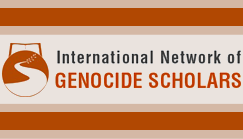Submission Type
Blog Post
Abstract
Over the past two decades, scholarly research on conflict-related sexual violence (CRSV) has steadily grown. Despite this, gaps remain. Significantly, while there is a strong foundation of research on female victims of CRSV, research on male victims is growing but still lags behind. In the Bosnian context, women have been widely recognised as victims of genocidal sexual violence during the 1992 to 1995 war, while male victims of sexual violence often fall under the category of torture or crimes against humanity. This is despite a large amount of evidence indicating that men were victims of sexual violence in the conflict.
This paper consolidates existing scholarship on sexual violence against men in Bosnia-Herzegovina under two main themes: typology of sexual violence and transitional mechanisms for male victims. In so doing, the paper addresses the state of the art of scholarship on sexual violence and indicates avenues for future research. Overall, there is a shortage of research on male victims of sexual violence in Bosnia-Herzegovina, especially relating to transitional justice, legal justice and the long-term effects of such violence.

Researching sexual violence against men in Bosnia-Herzegovina: Current progress and research gaps
Over the past two decades, scholarly research on conflict-related sexual violence (CRSV) has steadily grown. Despite this, gaps remain. Significantly, while there is a strong foundation of research on female victims of CRSV, research on male victims is growing but still lags behind. In the Bosnian context, women have been widely recognised as victims of genocidal sexual violence during the 1992 to 1995 war, while male victims of sexual violence often fall under the category of torture or crimes against humanity. This is despite a large amount of evidence indicating that men were victims of sexual violence in the conflict.
This paper consolidates existing scholarship on sexual violence against men in Bosnia-Herzegovina under two main themes: typology of sexual violence and transitional mechanisms for male victims. In so doing, the paper addresses the state of the art of scholarship on sexual violence and indicates avenues for future research. Overall, there is a shortage of research on male victims of sexual violence in Bosnia-Herzegovina, especially relating to transitional justice, legal justice and the long-term effects of such violence.





Comments
View Anna Gopsill's bio.